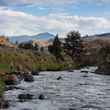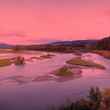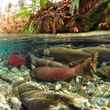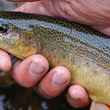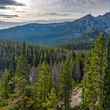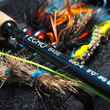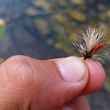Under normal conditions, trout deal quite well with high water. During the worst of spring runoff, they stake out the calmer edies and the quiet water that might flow over a bottom that’s normally high and dry.
And it’s very likely that the trout dealing with the record flooding in Yellowstone National Park this week – an occurrence that park Superintendent Cam Sholly described Tuesday as a 1,000-year weather event – will be just fine.
At least in the short term. But Yellowstone’s fisheries story is nuanced. It’s not one where trout simply need water to get by. Over the last decade or so, the park’s fisheries biologists have dedicated their lives to improving and restoring the park’s native trout and grayling fisheries – an effort that taxpayers have helped fund and volunteers have helped execute.
This week’s record flooding that has destroyed homes, washed out normally reliable roads and pulled bridges from their pilings could also be setting the park’s native fish recovery efforts back, and it could be setting them back years.
During an online press call on Tuesday, Sholly understandably spent an hour with national media addressing the pressing issues. How is the park going to rebuild? How long will it take to reopen the gates, let alone the washed-out roads? Has anyone died (thankfully, no)? When will power be restored?
These are top-of-mind issues that require immediate attention from the superintendent who, also understandably, looked exhausted as Zoom blasted his image across the internet on Tuesday. These are the issues that need attention now.
Written questions about the park’s fisheries were not addressed Tuesday – the National Park Service has bigger fish to fry. But the time will come when Sholly and the park’s biologists will have to turn their attention to the state of Yellowstone’s native trout and grayling. And when they do, there’s no telling what they might find.



